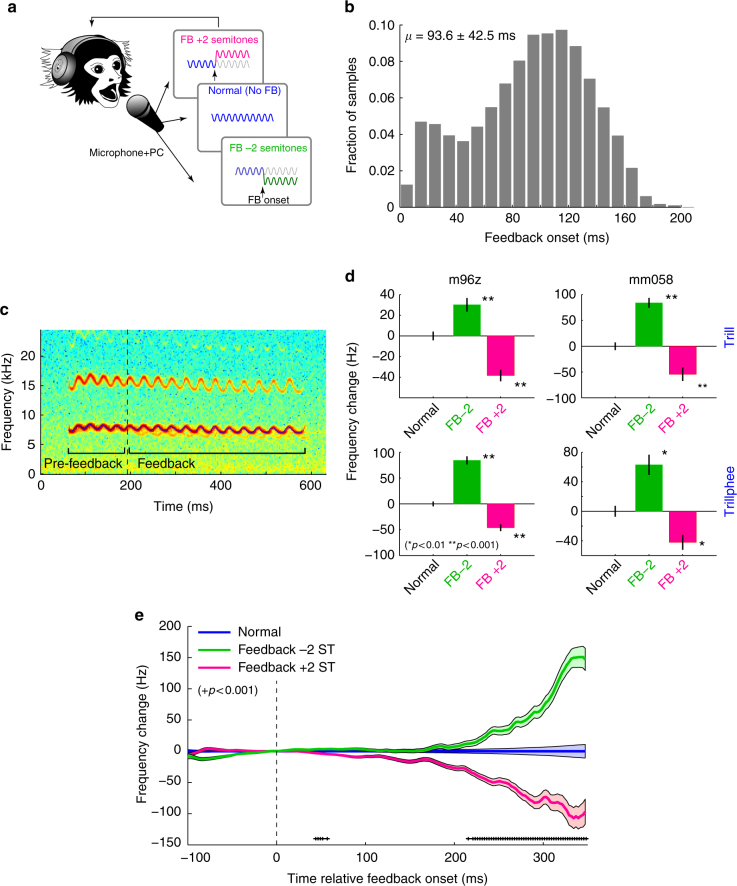Fig. 1.
Feedback-dependent control of vocal frequency in marmosets. a Schematic illustration of shifted feedback experiment including +2 and −2 semitone feedback (FB) frequency shifts. b Distribution of feedback trigger times. c Sample trill vocalization illustrating −2ST (semitone) feedback including pre-feedback and feedback time ranges. The shifted feedback is weakly visible in the spectrogram. Frequency contour is highlighted (blue). d Comparison of mean vocal frequency change between pre-feedback and feedback time periods for normal, −2ST, and +2ST conditions demonstrating compensatory vocal changes in the opposite direction of the feedback shift. Results are shown separately for trill (top) and trillphee (bottom) vocalizations, and for the two animals. Error bars: standard error (SEM); *p < 0.01, **p < 0.001 for each feedback vs. normal (Kruskal–Wallis test). e Time course of compensatory vocal changes in trills during shifted feedback demonstrating expected vocal compensation with a 215 ms latency from feedback onset (Error bars: SEM, +p < 0.001, Kruskal–Wallis). Sample sizes and statistical details may be found in the Supplementary Note 1

